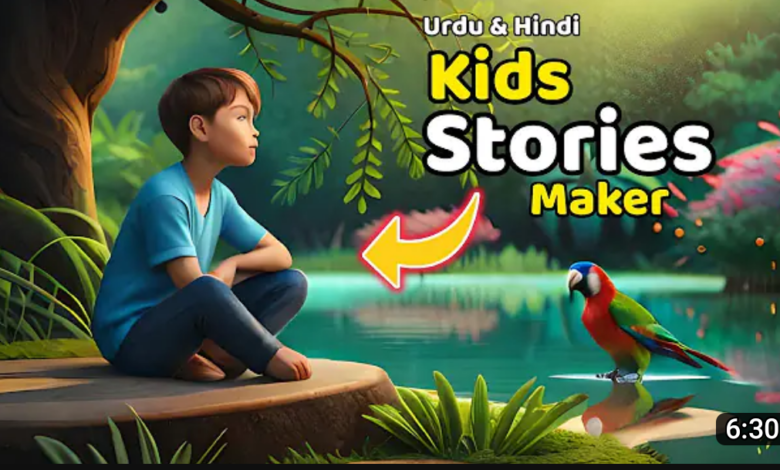Crafting Captivating Kids’ Stories: A Comprehensive Guide for Aspiring Writers
Crafting Unforgettable Stories: A Comprehensive Guide to Creating Unique Narratives

Crafting Captivating Kids’ Stories: A Comprehensive Guide for Aspiring Writers
Introduction Creating engaging and imaginative stories for children is a rewarding and creative endeavor. Whether you aspire to write picture books, chapter books, or middle-grade novels, this guide will provide you with essential tips and techniques to craft captivating kids’ stories that will leave a lasting impact on young readers. From generating creative ideas to developing relatable characters and constructing compelling plots, this SEO post will equip you with valuable insights and actionable steps to kick-start your journey as a children’s story writer. Let’s dive in!
Table of Contents:
- The Power of Imagination in Kids’ Stories
- Finding Inspiration and Generating Ideas Understanding the Target Audience
- Crafting Memorable Characters Building Engaging Plots and Story Structures Creating a Delightful Setting
- Weaving Themes and Moral Lessons Enhancing Readability and Language
- Incorporating Humor and Fun Elements
- Adding Visual Appeal with Illustrations
- Editing and Revising Your Story
- The Importance of Beta Readers and Feedback
- Final Thoughts and Taking the Leap
- The Power of Imagination in Kids’ Stories Imagination is the cornerstone of children’s literature. When writing for kids, embrace the boundless power of imagination and creativity. Encourage curiosity and wonder through vivid descriptions, whimsical elements, and fantastical worlds. By sparking their imagination, you can transport young readers to magical realms and inspire their dreams.
- Finding Inspiration and Generating Ideas Inspiration can strike from various sources, such as personal experiences, nature, history, or even everyday objects. Keep a journal or digital notes to jot down ideas and observations. Tap into your inner child and explore what fascinates and captivates young minds. Use brainstorming techniques and mind mapping to generate fresh and unique story concepts.
- Understanding the Target Audience To connect with your readers, it’s crucial to understand their age group, interests, and developmental stage. Tailor your storytelling approach accordingly, whether you’re writing for preschoolers, early readers, or middle-grade children. Consider their vocabulary, attention span, and emotional sensitivities to create age-appropriate content.
- Crafting Memorable Characters Compelling characters are the heart of any children’s story. Develop protagonists that children can relate to, root for, and be inspired by. Give your characters distinct personalities, strengths, weaknesses, and relatable motivations. Create diversity and representation to reflect the real world and foster inclusivity.
- Building Engaging Plots and Story Structures An engaging plot keeps young readers hooked from beginning to end. Structure your story using the traditional three-act structure or explore other narrative frameworks. Create a balance between action, suspense, and moments of reflection. Introduce conflict and obstacles that drive the plot forward, ensuring a satisfying resolution.
- Creating a Delightful Setting Transport readers to captivating and immersive worlds through detailed settings. Describe the sights, sounds, smells, and textures to paint a vivid picture. Whether it’s an enchanted forest, a bustling city, or a magical school, make the setting come alive to enhance the reading experience.
- Weaving Themes and Moral Lessons Children’s stories often convey valuable life lessons and moral values. Thoughtfully integrate themes like friendship, courage, empathy, and resilience into your narrative. Balance subtlety with clarity, allowing readers to derive.
Crafting Unforgettable Stories: A Comprehensive Guide to Creating Unique Narratives
Introduction In the vast ocean of content available online, it’s essential for writers and storytellers to captivate their audience with unique and engaging narratives. Crafting an unforgettable story requires a blend of creativity, structure, and attention to detail. In this SEO post, we will explore the key elements and techniques that can help you create a truly unique story that stands out from the crowd. Whether you’re a seasoned writer or just starting, these guidelines will provide valuable insights and practical tips to elevate your storytelling prowess.
- Understanding the Power of Uniqueness Uniqueness lies at the heart of every memorable story. To create a truly distinctive narrative, it’s crucial to have a deep understanding of your target audience, genre conventions, and existing narratives. By identifying gaps, exploring uncharted territories, or reimagining familiar themes, you can carve out your own storytelling niche.
- Developing Compelling Characters Characters are the lifeblood of any story. To make your story unique, focus on developing multidimensional, relatable characters. Give them distinct personalities, motivations, and flaws. Consider their backgrounds, experiences, and how they evolve throughout the narrative. By avoiding clichés and stereotypes, you can breathe life into your characters and make them resonate with your readers.
- Crafting an Original Plot The plot serves as the backbone of your story. While there are only a limited number of basic plots, it’s the unique twists, unexpected turns, and innovative story structures that set your narrative apart. Experiment with non-linear storytelling, parallel storylines, or unconventional plot devices to engage your audience in fresh and exciting ways.
- Building a Vibrant Setting A compelling setting can transport readers to a different world. Whether it’s a real location or a fantastical realm, focus on creating a vivid and immersive environment. Pay attention to details, incorporate sensory descriptions, and intertwine the setting with the story’s themes and characters. A well-crafted setting can evoke emotions, enhance the story’s atmosphere, and make it truly unforgettable.
- Mastering the Art of Dialogue Dialogue is a powerful tool for developing characters, advancing the plot, and bringing your story to life. Crafting authentic and distinctive dialogue helps to differentiate your story. Pay attention to each character’s voice, speech patterns, and mannerisms. Use dialogue to reveal information, create tension, and deepen relationships between characters.
- Embracing Original Themes Themes provide the underlying messages and ideas in your story. To make your narrative unique, explore unconventional or lesser-explored themes. Delve into thought-provoking topics, challenge societal norms, or shed light on underrepresented perspectives. By exploring original themes, you can make a lasting impact on your readers.
Conclusion Crafting a unique story requires a combination of creativity, research, and a deep understanding of storytelling techniques. By focusing on developing compelling characters, original plots, vibrant settings, authentic dialogue, and embracing unique themes, you can create narratives that resonate with your audience long after they’ve finished reading.
Remember, storytelling is an art that evolves with practice, so keep honing your skills, experimenting, and pushing the boundaries of your imagination. Start your writing journey today and let your creativity flow to craft unforgettable stories that leave a lasting impression.
arewanahiya.om







